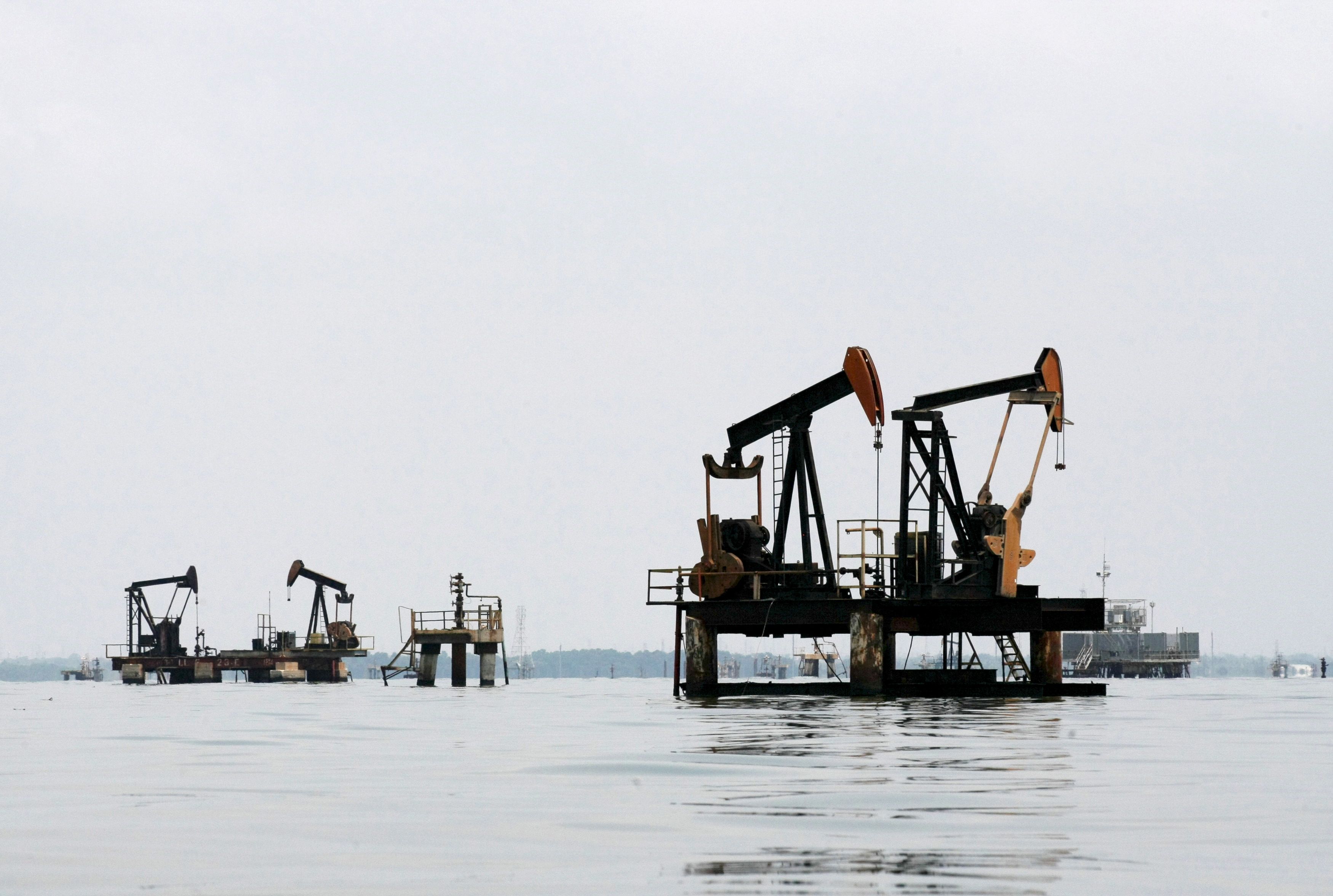US output, Iran and Venezuela sanctions in focus

[ad_1]
Oil pumps are seen in Lake Maracaibo, in Lagunillas, Ciudad Ojeda, in the state of Zulia, Venezuela.
Isaac Urrutia | Reuters
Oil prices were on track for sharp weekly declines on Friday as robust U.S. output countered production losses in sanctions-hit Iran and Venezuela.
Brent crude oil futures were up 11 cents at $70.86 per barrel around 8:45 a.m. ET (1245 GMT). The international benchmark for oil prices slumped 2% in the previous session and was set for a weekly fall of 2.2%.
U.S. West Texas Intermediate crude futures were up 34 cents at $62.15` per barrel, after sinking 2.8% on Thursday. WTI has declined 2.2 percent so far, its second straight weekly drop.
“Even with deep losses in supply from Iran and Venezuela, as well as a few other countries around the world, OPEC+ will still need to hold back production to balance the market,” SEB analyst Bjarne Schieldrop said in a note, adding that this is a reflection of the ongoing output growth in the United States.
U.S. crude oil production reached a record 12.3 million barrels per day last week. U.S. crude output has plateaued in recent months, but is still up by about 2 million bpd over the past year.
Rising U.S. oil production has helped to offset some of the disruption as U.S. sanctions against Iran and Venezuela have added to supply cuts led by the Middle East-dominated OPEC and its allies, known as OPEC+.
Production from Saudi Arabia could edge higher in June to meet domestic demand for power generation, though output will remain within its quota in the supply pact, sources familiar with the kingdom’s policy said.
The world’s top crude exporter is expected to produce about 10 million bpd in May, slightly higher than April but still below its 10.3 million bpd quota under the OPEC-led deal, industry sources said.
Traders said that prices were also pressured by Russia resuming supply of clean oil through the Druzhba pipeline toward western Europe after several countries halted imports last week because of contamination. In Poland, the government released strategic reserves to ensure supply.
In the United States, analysts say supply will rise further as its export infrastructure is improved.
“One of the things that we can see in the near future is the de-bottlenecking of the Permian basin in the U.S. through new pipelines and export capacity. This will connect the world’s largest shale basin to the global oil market,” said Will Hobbs, chief investment officer for Barclays Investment Solutions.
Despite these disruptions and sharp oil price rises in the first months of this year, some analysts say the long-term price risk to crude oil is skewed to the downside.
Erik Norland, senior economist at commodity derivative exchange CME Group, said “the 130 percent rise in U.S. production due to the shale oil revolution” during the past decade had created a strong and constant downside risk to oil prices, which was visible in exchange trading positions.
“Observers of the oil markets might be surprised to discover that during the past decade, out-of-the-money (OTM) put options were more expensive than OTM calls 92.5 percent of the time for crude oil,” he said.
“In other words, oil traders have spent much more time during the past decade worried about downside risks than prices heading higher,” Norland added.
— CNBC’s Tom DiChristopher contributed to this report.
Source link







